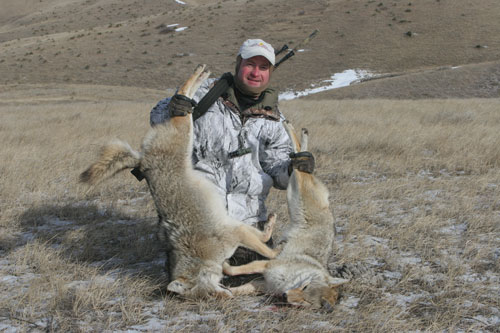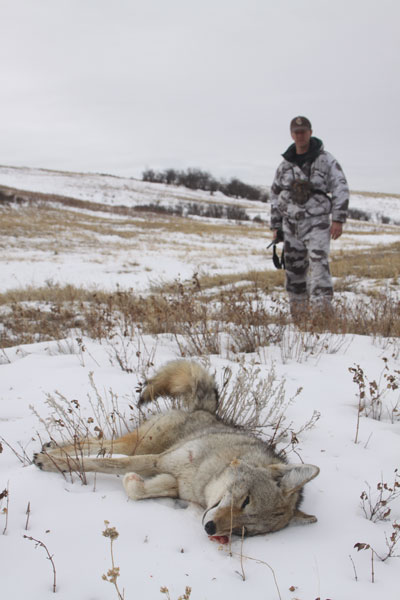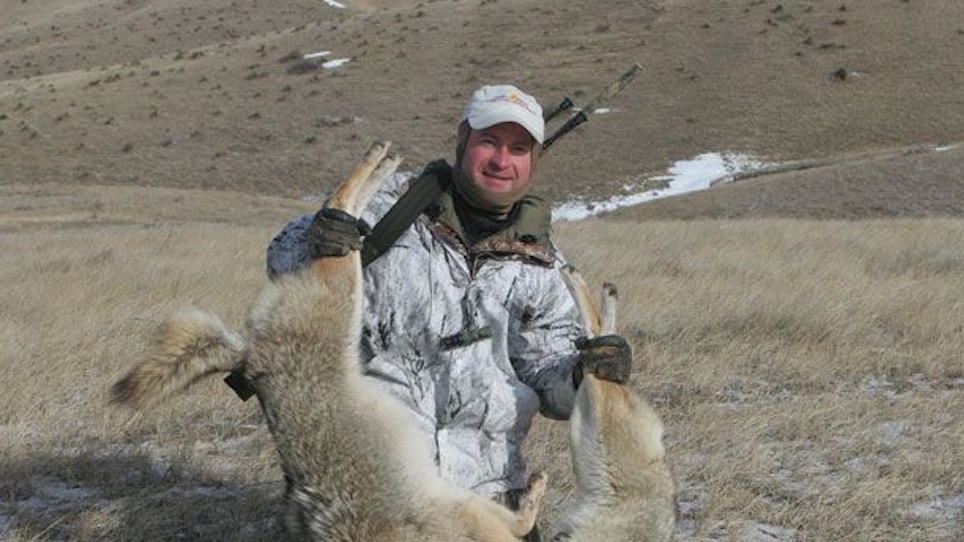 Did you ever consider that coyotes are just like you and I? No, I don’t mean they have a job and need to get their pups to ball practice after school, but if you break it down to simplistic terms, they follow a daily schedule just like you. If you consider that schedule and plan accordingly then you might just be one step ahead of the coyotes on your next hunt. So let’s get down to planning.
Did you ever consider that coyotes are just like you and I? No, I don’t mean they have a job and need to get their pups to ball practice after school, but if you break it down to simplistic terms, they follow a daily schedule just like you. If you consider that schedule and plan accordingly then you might just be one step ahead of the coyotes on your next hunt. So let’s get down to planning.
MORNING
In some remote regions coyotes ramble about in broad daylight all day long, but for conversation’s sake let’s discuss coyotes that see a marginal amount of pressure, which helps mold their daily schedule. With that in mind morning is a time for coyotes to wrap up nocturnal hunting chores and begin heading toward bedding cover where they’ll take refuge during daylight. Depending on the season, their bedding cover may provide them shade from the sun, a windbreak from winter winds or seclusion from hunters.
In brief, look for dense, rugged and remote cover to set up a morning trap. My plan is to get into place near refuge cover before dawn breaks, wait patiently to let the area calm down and then begin calling. A favorite strategy of mine is to set up in uplands or river breaks. Coyotes habitually hunt riparian zones and lowlands where prey flourishes, and then trek to high country haunts for loafing and security. Arrive at these loafing areas ahead of the coyotes and you’re in place to spring the trap.
MIDDAY
As noted above, coyotes typically retire to midday areas where they can relax, nap and stretch without fear of being harassed. Coyotes find this refuge in a variety of habitat depending on the national location of their home. Badlands, swamps, grasslands, canyons and city parks all play equal roles for coyote escape condos.
 Once you believe your coyote targets have retired to their safe place for the day you need to mobilize and plan a downwind approach. Coyotes may bed in full view, but generally they dive into cover giving you the freedom to take most any route into their bedrooms. But whoa! Don’t get too close and trip an alarm by spooking a front-door coyote. Instead, tiptoe to the edge of the cover, locate an opening for shooting opportunities and then begin your calling sequence.
Once you believe your coyote targets have retired to their safe place for the day you need to mobilize and plan a downwind approach. Coyotes may bed in full view, but generally they dive into cover giving you the freedom to take most any route into their bedrooms. But whoa! Don’t get too close and trip an alarm by spooking a front-door coyote. Instead, tiptoe to the edge of the cover, locate an opening for shooting opportunities and then begin your calling sequence.
After my morning hunt I’ll often hike further into backcountry and target a rocky canyon or a series of eroded coulees. Once I get within calling distance I locate a high vantage point and begin calling. My strategy is to wake the coyote neighbors by ringing the front doorbell.
EVENING
As the sun begins descending toward the horizon coyotes once again feel the rumble in their tummies. This is the time of day to strategically place yourself between bedrooms and coyote hunting country. Research your area and try to decide where coyotes will be traveling for the best hunting.
Coyotes thrive on rodents, but don’t overlook areas that are heavily populated with whitetails, upland game, livestock and even housecats. Coyotes may even target gardens in the early fall. Study the diet of coyotes in your area and then place yourself accordingly.
Remember those uplands I talked about earlier? Instead of sitting up high I often move to a river bottom and find a stack of round hay bales for an elevated platform. The coyotes will be traveling from high refuge cover to hunt along the river and my placement makes them feel like they hit the buffet jackpot when I start calling.
Study the coyotes in your area and before long you’ll have your own all-day hunting game plan.






